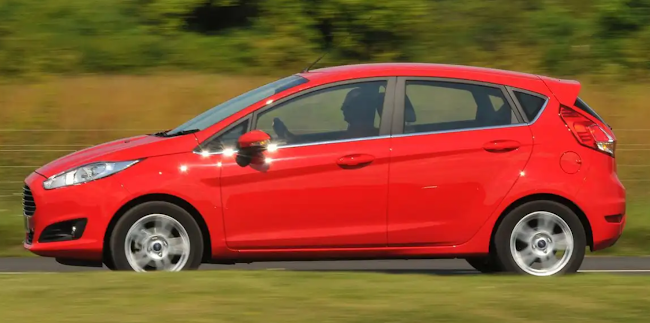BMW 1 Series - King Of Premium Hatches (2021 Model Review)
A moment’s silence please, for the passing of the rear-wheel-drive BMW 1-series. But hang on a second, because does anyone actually care? Chances are if you’re into cars, then which axle is driven probably does matter, a bit.
But it has been said, anecdotally and perhaps by driving enthusiasts peering down their noses, that many 1-series drivers were never really aware of their car’s sporting rear-drive credentials anyway. So BMW’s switch to FWD – and all-wheel-drive in the case of the M135i xDrive – for its latest premium hatchback isn’t as sacrilegious as it might sound.
Despite the switch to FWD, BMW still markets the 1-series as a ‘sporty’ family hatch. And luckily for BMW, the rear-to-front switcheroo hasn’t diluted the formula. It’s still a cracking steer.
Woah, before we get into pre-loaded anti-roll bars, let’s talk tech
You’re as qualified as we are to judge the One’s styling, so we’ll save you a subjective critique on that rather fussy grille and skip straight to things like the increased level of technology on offer. The brand’s imaginatively-named BMW Operating System 6.0 is a standard fit, although you can get the more advanced iDrive 7.0 version (seen on the latest 3-series) as an option.
The latter is one of the best infotainment systems around, and while it might not have the wow factor of the Mercedes-Benz A-Class’s equivalent MBUX, the level of all-around polish in the infotainment is impressive. We really like having a choice between the rotary dial, touchscreen and voice – it caters for all preferences. The voice recognition system works really well, too (you can do everything from changing radio stations, input sat-nav instructions and even change the colour of the interior lights).
It’s a well-made interior and the quality feels substantial and finger-friendly. We do wonder why BMW persists with fat steering wheel rims, though. It’s by far the chunkiest helm in a mainstream car we’re aware of.
Eyes forward and the BMW 1 Series for sale are available with the BMW Live Cockpit Plus digital dashboard display and a head-up display showing sat-nav, media, phone and driving data. Where the digital dials disappoint (they’re not as customisable as Mercedes-Benz’s or Audi’s), the latter is about as good as head-up displays get, both for clarity and functionality.
Like the 3-series, there’s a fairly button-heavy design around the 1’s centre console (the whole cabin is very similar to its saloon car's bigger brother), but the upside is there are plenty of physical switches for the crucial controls. You can also use BMW’s in-built personal assistant to adjust the temperature, navigate to the nearest pizza restaurant or request a spontaneous joke if you’re in the kind of mood to share a laugh with a faceless robot. Think of a slightly less capable Siri, but for cars.
There’s also Gesture Control. Flail your hands around to adjust things such as the volume. Yes, it is as gimmicky as it sounds.
FWD is a step forward
The RWD is gone and it’s not coming back for the 1-series in. For a small section of buyers – most likely those who think their 118d M Sport is a performance car – this will no doubt be the end of the world. However, for the rest of us (e.g those who just want a quality premium hatchback) this will be about as inconsequential as changing the breed of cow the dashboard leather is taken from.
They’ve compensated by making the One’s steering really pointy and sharp; it’s almost as quick-racked as a Ferrari V8, with an almost nervous quality to your first delicate inputs. But you quickly get used to it and realise this agility just makes it feel quite sporty, despite being front-wheel drive.
You also get fancy driver assistance tech such as ARB traction control (designed to reduce understeer by carefully metering out torque) and BMW Performance Control which applies the inside wheel brakes before traction is broken. Both of these are standard across the models for sale in the BMW 1 Series range.
Power out of a corner, and it feels every bit as predominantly front-driven as it is, the torque so well distributed that there’s little adjustability to be had from what is a hefty chunk of power.
How about the sporty versions?
Admittedly, the whole FWD challenge changes somewhat when we bring the M135i xDrive into the mix. No longer a 3.0-litre straight-six, the 1-series now uses a 2.0-litre four-cylinder petrol producing 225 kW and 450 Nm of torque. As you’d imagine, it doesn’t have the silky smooth yet sonorous character of the six, yet there’s plenty to like once you realign your expectations.
The good news is that traction from the standard xDrive all-wheel drive (with 50:50 torque distribution) is superb and the body control is taut enough to mean the M135i rarely feels out of its depth at road speeds.
The steering’s reasonable and not overly heavy like many performance cars and the chassis (with optional adaptive dampers) feels just about supple enough for UK roads, so all is not lost.
However, despite how capable the M135i is, you can’t help but wonder how much better it would have been as a driver’s car if it was rear-wheel drive. There’s no shortage of rivals in this sector – Mercedes-AMG A35, Audi S3, Volkswagen Golf R – and while the 135i is every bit as quick cross-country, it no longer has that special, defining feature that set it apart from the rest.
Then there’s the 128ti. It uses a 2.0-litre four-banger that makes 195 kW. It’s FWD and auto only, but it’s also 80kg lighter than the M135i.
Loads of steering and suspension changes have been made. The result? The 128ti doesn’t feel like a go-faster 120i, or a de-tuned M135i. It doesn’t feel as manic as the latter, instead, it offers a bit of an old-school hot-hatch alternative to the 4WD mega-hatches.
That means it isn’t afraid to cock a wheel or perform a bit of lift-off oversteer.
How does the rest of the range drive?
Very nicely, actually. We drove a Sport-spec 118d (with a 110 kW 2.0-litre diesel) and were impressed by the level of refinement; the engine is whisper-quiet at a cruise, wind noise is minimal and the overall drive is very polished. It also felt noticeably different to a Golf/A3 et al, partly because of an extra feeling of solidity, but also due to the adaptive suspension that we reckon – even in Comfort mode – errs on the firm side.
The popular 118i is a 1.5-litre workhorse. It’s refined and willing, though the six-speed manual transmission is quite stiff-suited, needing a precise and chunky heft to swap cogs. The gearing is very tall, too.
Gearboxes on offer range from a six-speed manual, a seven-speed dual-clutch automatic and an eight-speed Steptronic auto. Quite the selection, but BMW says it’s all down to ‘right-sizing’, whereby each engine is only fitted to a transmission that’s both necessary and cost-effective.
For example, the lower-powered 116d can be had with the manual and seven-speed DCT, yet if you want an auto 120d it will only be available with the eight-speeder owing to its ability to manage the extra torque.
How much room is there in the new BMW 1-series?
Up front, there’s ample room for tall drivers and passengers, while those in the back have an extra 33mm of knee room over the old car.
This comes in spite of the overall wheelbase being 20mm shorter – thank the front-wheel-drive architecture with transverse-mounted engines for that.
It’s not exactly roomy in the back, but it’s noticeably better than the cramped rear seats that came before. There’s still a transmission tunnel, but it’s not as tall as in its predecessor.
Despite the F40 1-series being 12mm taller than before, the rear headroom is still tight. Boot space, meanwhile, is 380 litres with the rear seats in place (20 litres more than before) and 1200 litres with them folded down – that’s about the same as a Mercedes-Benz A-Class and slightly behind the Volkswagen Golf.
BMW 1-series: verdict
It may be a big departure from what’s come before, but the BMW 1-series has come through its rebirth relatively unscathed. It may not be rear-wheel drive, but most customers will barely know. Practicality has also improved – even if the rear seats are a little tight still – as has the level of tech on offer.
Most importantly, the baby BMW is the winner of the small premium hatchback market as it’s better to drive than the Mercedes A-Class and has a more solid feeling interior than the Audi A3.
.
.
.
.



Comments
Post a Comment